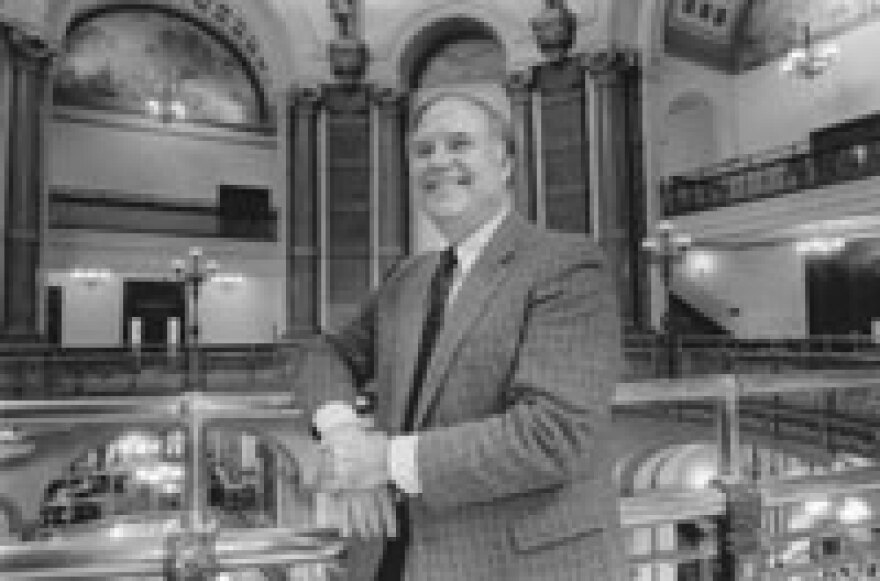“Be careful what you wish for,” advises an old adage, “because you just might get it.”
Gov. Rod Blagojevich might find himself reflecting on that sage advice in coming weeks, after the Illinois General Assembly sent the Democratic chief executive a $53 billion revenue-and-spending plan for the coming fiscal year that closely resembled what he proposed some eight weeks earlier.
To be sure, Blagojevich was the cheerful optimist as he took a victory lap around the state the day after the spring session ended.
“We balanced this historic budget deficit by ending business as usual,” Blagojevich told listeners at schools in Chicago, Decatur and Rockford.
Moreover, he said, the spending plan includes more money for education, health care and public safety, all without raising income or sales taxes.
The carefully honed sound bites and the TV shots of the governor with beaming schoolchildren are wonderful tools to burnish the “Reform and Renewal” image the governor’s public relations advisers wish to sell to Illinois voters.
But those interested in truth-in-advertising, or “cynical insiders” in Blago-speak, might quibble with the governor’s pronouncement.
For starters, the legislative handiwork has not produced a balanced budget, at least not as the term has been defined for decades. But then, neither did the plan Blagojevich offered in April. From an expected $1.6 billion in red ink when the books are closed on fiscal year 2003, the governor’s original plan anticipated ending FY 04 with $450 million in the bank to cover $850 million in bills, for a budgetary deficit of $400 million. That would be a dramatic improvement from the $5 billion gap Blagojevich said the state faced, but the deficit could go higher.
Republican leaders — and even some of the governor’s fellow Demo-crats — caution that the $3.7 billion combination of natural revenue growth and myriad tax increases, fee hikes, fund transfers, asset sales, accounting devices and other revenue enhancements lawmakers approved at the governor’s behest may well fall some $200 million short of covering all of the spending lawmakers authorized.
Among the questions critics say should worry the governor and his financial team:
• Will the moribund economy recover enough so that base general funds revenues — chiefly from income and sales taxes and federal aid — grow by the $95 million the budget expects, after two years of decline?
• Can the state fetch $230 million from the sale of the Thompson Center in Chicago, tollway headquarters in Downers Grove and unused land around the Elgin Mental Health Center?
• Will bidders pay $350 million for the license to a riverboat casino facing a top tax rate of 70 percent? Higher casino taxes and admission fees are counted on for another $200 million, under the governor’s plan.
• Might court challenges block some of the $326 million anticipated from sharp increases — as high as 20-fold in some cases — in licensing fees imposed on various businesses? Some legal experts question whether fees can be increased for general government spending, rather than for specific purposes linked to those paying, such as regulation of the industry assessed the fees.
• Will some of the estimated $373 million from increased income and sales taxes — mostly on corporations losing exemptions — be offset if the higher taxes discourage companies from locating or expanding here, as business leaders warn?
• Can the state budget director — an appointed bureaucrat — be empowered to order the state comptroller and the state treasurer — elected constitutional officers — to shift money into the state’s checkbook account from dedicated funds as he sees fit? Set up as separate accounts on the state’s books, the funds usually are fed by specific fees, such as fishing or hunting licenses, or voluntary donations, such as the income tax checkoffs, and used only for related activities. The governor plans to skim more than $700 million from the funds, with the biggest hit coming from accounts earmarked for road and bridge projects.
Such revenue uncertainties prompted skeptical Republicans to label the revenue package a house of cards, likely to tumble as fall winds blow and lawmakers return for the veto session.
But Blagojevich’s plan will be shored up by almost $800 million in new federal funds, a windfall coming to the state as part of the tax cut package President George W. Bush signed recently. The governor also can cut some of the extra spending lawmakers added to his initial proposal, chiefly for education and human services.
In all, the appropriations measures before the governor would boost general fund spending by almost $1 billion, roughly $300 million more than he asked for.
Lawmakers agreed with most of his priorities, starting with some $400 million more for local school districts. The increase will allow a $250 boost, to $4,810, in the spending level the state guarantees for each child, as well as $30 million more for early childhood education and almost $100 million more for special education and other mandated programs.
The legislature also provided funding to expand health insurance programs for the working poor and to re-open Sheridan Correctional Center, two other high administration priorities.
Notwithstanding a few legislative tweaks, Blagojevich noted, lawmakers gave him 99 percent of what he sought. If all his revenue assumptions don’t pan out, however, that just might be enough rope to hang himself.
Charles N. Wheeler III is director of the Public Affairs Reporting program at the University of Illinois at Springfield.
Illinois Issues,June 2003






